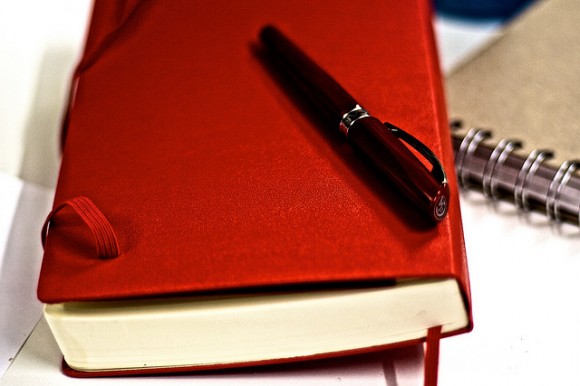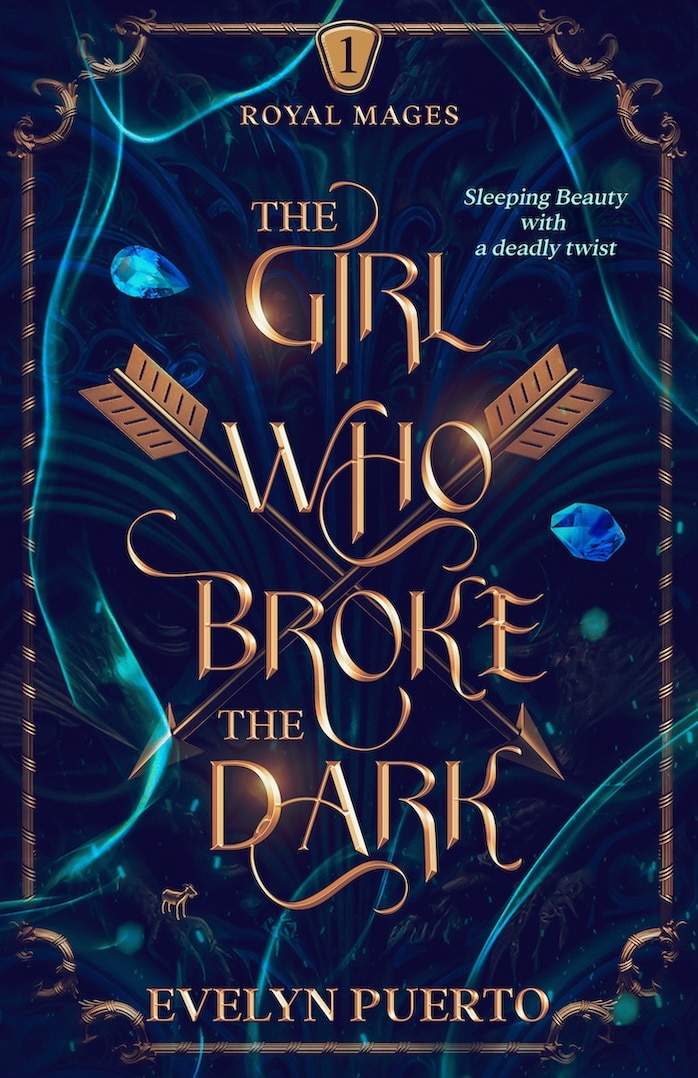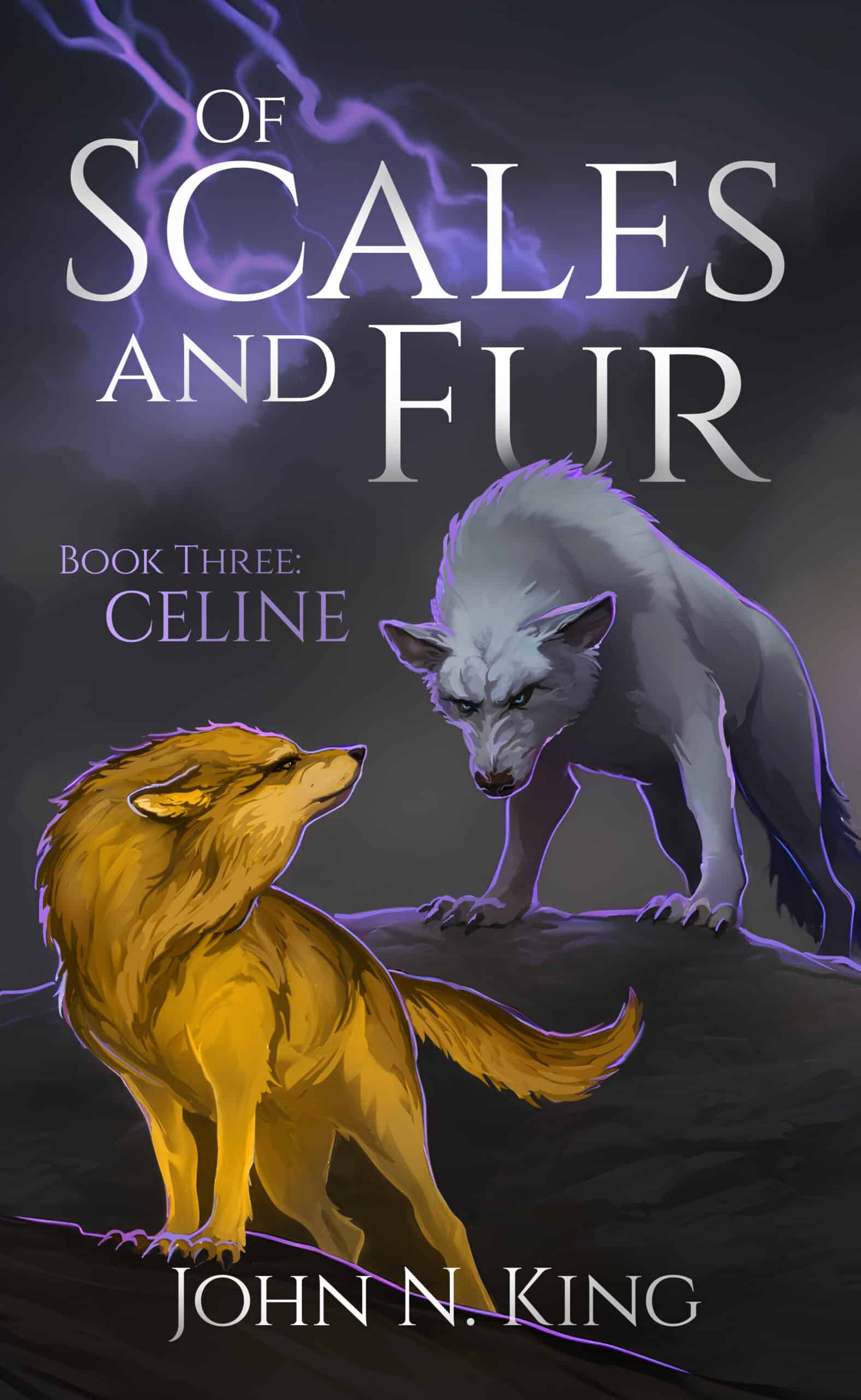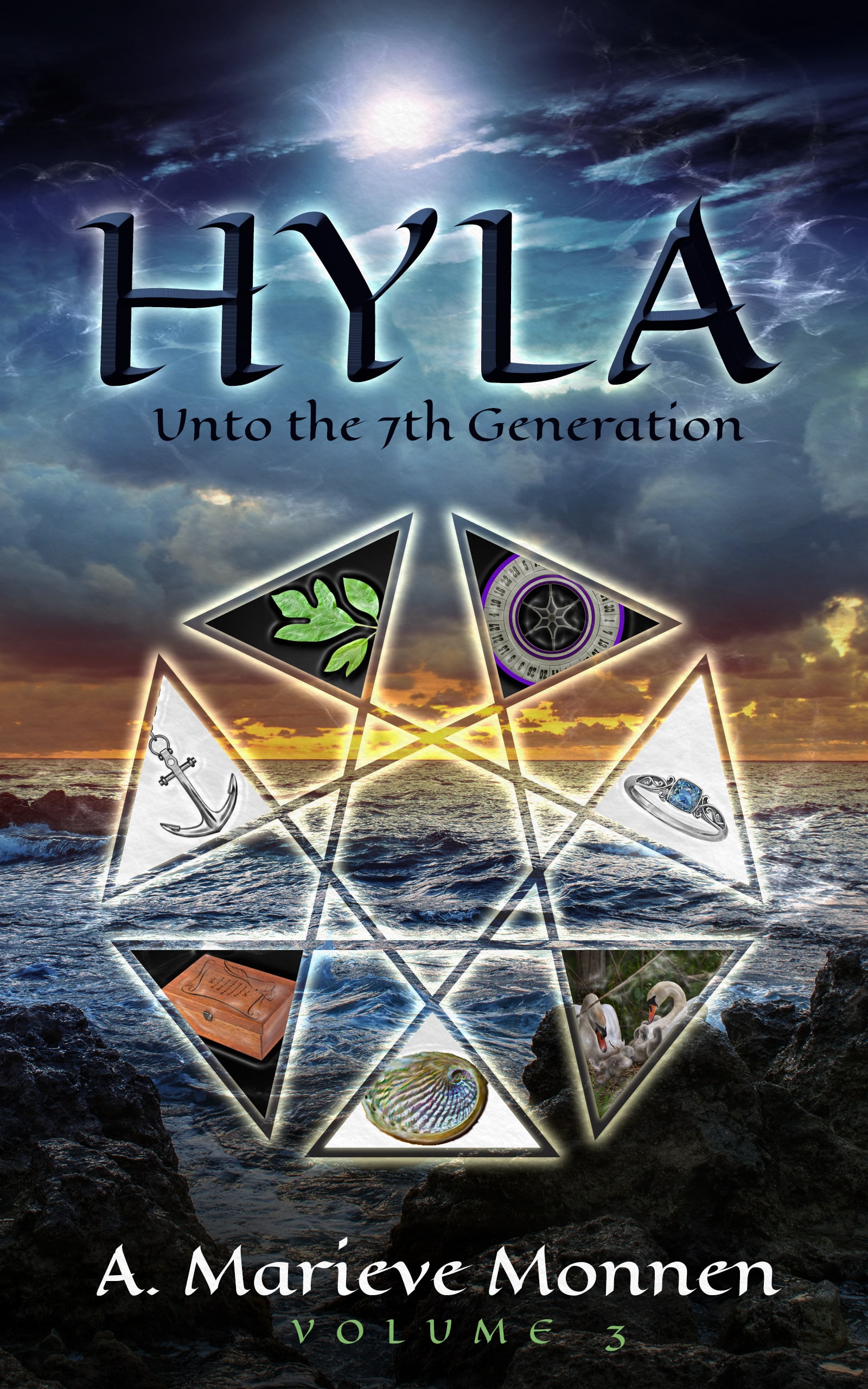I consider myself primarily a creative writer, but to pay the bills, I take on many the odd job involving writing. Because of that, I've been doing a lot of editing lately, editing blog posts, articles, books, and more.
With all this editing, I've found that I keep making many of same changes again and again. Yes, there are typos and grammatical corrections, but a surprising amount of the editing I do is just simple formatting.
Copyediting and Formatting Tips for Writers
How do you make your copyeditor happy and format your writing perfectly? Here are a few of the biggest mistakes I see (and a few tricks) so you can better format your writing.
1. It's one space after a period, NOT two.
I sympathize. I used to do this too, but putting two spaces after each sentence is an antiquated rule. It's time to stop.
Wide spacing after a sentence was a fashion with traditional typesetters (think Gutenberg). The rule to hit space twice after each sentence was developed in the early 20th century when typists tried to follow this fashion on their typewriters.
However, two spaces (technically, it's considered an em-space) fell out of use in publishing in the 1940s, and nearly every style guide now recommends one space. Also, because most publishing platforms on the Web—such as Blogger and WordPress—aren't as smart as most word processors, two spaces can sometimes cause ugly indents into the margins.
I know it's hard to change a habit like this, but you can do it. I believe in you!
2. em-Dash Shortcut
When you put two dashes next to each other, they combine to form an em-dash—like that. Or at least they do on Microsoft Word.
The problem is two hyphens don't magically become em-dashes on most blogging systems, which means I have to edit them. A lot of them. Seriously, I think about half the changes I make to an average article online is simply fixing incorrectly formatted em-dashes.
But it's too hard to hit that special character button (Ω) to get an em-dash every time. Fortunately, there's a quick keyboard shortcut that I use all the time:
alt/option + shift + dash (-)
Just hit alt/option + shift + dash (-) at the same time and you'll get a beautifully long em-dash. Isn't that fun?
(Don't know what an em-dash is? Check out our em-dash guide.)
3. en-Dash Shortcut
Like the em-dash, there's a quick shortcut for an en-dash as well, which comes in handy whenever you have to put two numbers together (e.g. I work a 9–5 job). Here's the shortcut:
alt/option + dash (-)
(Don't know the difference between an en-dash and your face? Here's a guide on the uses of the en-dash.)
4. Use Ellipses Correctly.
Ellipses are like bouncy castles. In the right setting (i.e. a birthday party), they're great. But if you leave it on your street for a week, it becomes something of an eyesore.
Ellipses, those three periods bunched up together, are used to shorten quotations and convey a trailing off speech in dialogue. Please note, they're not meant for everyday posts on Facebook… If you think this looks okay… you're wrong.
There's a fun shortcut for a true ellipses too, and I find it especially useful on Twitter when you really can't afford to spare those two extra characters. Here's the shortcut for a single-character ellipsis:
alt/option + semicolon (;)
Here's more information about how to use ellipses correctly.
5. Spell out numerals one through nine
Some style guides say you should spell out numerals one through ninety-nine (which is what we do on The Write Practice, by the way), but all of them say you should at least spell out one through nine.
Of course, that means that sometimes, you have strange combinations of numbers and text, for example, “There were six of us that day and the weather was only 22 degrees.” That's fine, though. Keep your style consistent.
6. Spell out the percent sign
Symbols are for math. For writers, it's 110 percent, not 110%.
Specific Formatting for the Web
There are also a few formatting best-practices specific to the Internet.
7. Use headers
Headers (like all the big, bold text in this post) are everyone's friend when reading online. They allow people to get more information when skimming, break up the text, and create structure. You should use them!
Most blogging and writing platforms have handy buttons to make headers. In WordPress, which is what we use here, there's a dropdown that allows you to select between paragraph, heading 1, heading 2, all the way through heading 6 (which is very small!).
You can also use HTML to create headings. In HTML, the formatting for a header is <h1>, <h2>, <h3> and so on. Make sure to close your HTML tag though by adding a </h1>, </h2>, </h3> tag respectively at the end of the text you want to make a header. Otherwise, the rest of your page will be really big and bold!
8. Short paragraphs, please.
When writing online, like newspapers, large blocks of text intimidate readers. That's why when we write online we use short paragraphs no more than five or six lines.
Isn't this friendly?
Also, readers online like to skim (you're skimming right now, aren't you?). Short paragraphs force people to slow down and help readers get more information from the text when they skim.
Learn more:
- Sentence Spacing
- How to Use an Ellipsis… Correctly
- Why You Need to Be Using Oxford Commas
- How to Use Either, Neither, Or and Nor Correctly
Do you have any formatting pet peeves that I missed? Share in the comments.
PRACTICE
A group goes on what starts out as a fun, winter outing, and for today's practice, you have two options for how to describe their experience. Option one is to follow all the rules we've listed above, using true em-dashes, proper use of ellipses, and only putting one space after each period. But I also think that breaking all the rules is one of the best ways to learn them, so the second option is to break all these formatting guidelines in your practice.
You choose. Are you going to be a rule follower or a rule breaker?
Write for fifteen minutes. When you're finished, post your practice in the comments section. And if you post, be sure to leave feedback on a few practices by other writers. Make sure to guess if they're a rule follower or rule breaker.
Happy writing!
Joe Bunting is an author and the leader of The Write Practice community. He is also the author of the new book Crowdsourcing Paris, a real life adventure story set in France. It was a #1 New Release on Amazon. Follow him on Instagram (@jhbunting).
Want best-seller coaching? Book Joe here.




Great post, Joe! You’ve nailed it. The spacing and the variety of dashes are the very first things I have to fix in any document I’m editing. Get the word out there! 🙂
Thanks so much, Danielle. 🙂
I struggle with the two spaces after a period and usually have to do a lot of fixing after writing. I blame learning to type before the advent of the personal computer and though I try, it may be one of those things I know I’ll always have to correct. I was also told recently that the publishing industry prefers indents to tabs. More corrections in my future, I think. 🙂 Thanks for these tips. I’m printing for my bulletin board!
Indents to tabs? Tabs are indents, not?
You can program a return to indent the first line without a tab.
what I don’t get is how the programming can change in the middle of a file eg. hanging paragraphs – who invented them (opposite of indent)
I don’t use Word, but instead use InDesign or Quark. I usually save formatting until after I have written something because it is easier to be consistent if you work with it that way. Hanging paragraphs are made by having the first line set closer to a margin and subsequent lines hang further back. You can usually do this with a graphical representation of triangles on the ruler above the text. The top triangle is forward to the bottom triangle. It is a writing challenge to explain this. It would be much easier to point and say – drag this here and that there!
Understandable! Find and replace is a good trick to get rid of them all at once, if you have to. Yep, those darn tabs don’t play nicely with typesetting, both online and off. One of those things. 🙂
The phone call came about six-thirty; we could see by the gleam in her eye that someone was offering an enticing project to our daughter. Her face glowed as she hung up the phone. Her “in group” peers were going tobogganing and wondered if she would like to go along.
It had been a frigid day, -40 degrees—C or F, at that depth there’s no difference—and we had our reservations…
“Please,” she begged. “This will be my ONLY chance this winter. If I don’t go tonight, they’ll never ask me again!”
Reluctantly we agreed. After all, who were we to ruin our daughter’s social status forever? So her father loaded up her toboggan and drove her to the hill where the activity was to take place.
The phone call came about eight-thirty—a friend who lived across from the hill called on his way to the hospital—saying our daughter had been injured when the inner tube she’d been riding down on hit a bump and she went flying.
When the sun shines during the day and the temperature drops so low after sundown, the melted surface snow forms glare ice, rock hard. This was what she’d come down on, head and one shoulder first. She’d been knocked unconscious. The other young people, stunned and not knowing what else to do, had grabber her arms and dragged her up to the top of the hill again.
She came to, complaining that her shoulder hurt. When we found out later that she’d broken her collar bone I almost lost it. You can KILL a person by moving them when they have a broken collar bone.
It was indeed the last time that winter she went tobogganing.
ALT+0151 is how I make an em dash. It works in all Office applications. BTW, if you’re editing a lot of dashes to make em dashes, they’ve overused the em dash! They’re only for parentheticals that are really important. To me, it’s like using too many exclamation marks.
Thanks Karla!
We started out to empty the trash, but didn’t make it out of the driveway together. He was against going to the recycling center which was a quarter of mile further than the other. He hopped out of the car as soon as she exploded with an expletive.
I am too tired to write this practice. I enjoyed this post which is a refresher course for keyboard strokes for unusual symbols. I used to know some of these. I used them a lot as a typesetter. I just don’t do enough typesetting these days to keep up with all my keystrokes. Sometimes I have to spend five minutes searching different key combinations to find the one I am determined to use.
And the small paragraph rule has absolutely ruined my reading. Traditional paper books with their long trails of words marching on the page make me extraordinarily tired. Where I used to gobble my books, I only read small patches of them now. I am an online reader now.
Also I like to listen my books rather than read them. I have grown so lazy. What used to be almost an obsessive compulsive to make every symbol perfect, to read books one after another are hazy dreams of another reality. Now I listen, listen, listen to books and use my eyes to read luminous screens of short paragraphs.
So, have I done any of this exercise right? I haven’t used the symbols. I never use two spaces. I am just grateful I was able to push through the weariness I felt when I began this exercise and actually write for fifteen minutes. I am also thankful for this small gem of a blog where I can find the lost treasures of keystrokes.
What about a comma after “but”? It always used to be done but I’m wondering if folks haven’t eliminated that one, too.
I usually use a comma before but, but not after but. Unfortunately, I am no expert on grammar. I always need an editor or proofreader, if I am serious about it being right.
A comma goes before a ‘but’ as long as the but clause is independent. A comma CAN go after the but, but only if the ensuing clause is non-restrictive, eg:
I hate Christmas shopping, but I went with my friend anyway. (I went with my friend is independent: it makes perfect sense on its own)
I hate Christmas shopping, but, as Jane is my friend, I went anyway. (As Jane is my friend is non-restrictive, ie, without that clause the sentence still makes sense: I hate Christmas shopping, but I went anyway.
Hope that helps!
Here’s something I worked on:
***
Jennifer pulled up to the rusty gates of the abandoned amusement park and shut off the engine of her tan Isuzu Rodeo. She gazed through her windshield at the dark land. A derelict rollercoaster, with a couple cars frozen at the peak of a drop, was silhouetted against the moon. Her eyes trailed the forlorn ruin, noting the sections of missing track. She shook herself and glanced around outside her truck once more. There was no sign of her friend. ‘That’s odd. Danni is more punctual than this. I’m the late one to our meeting places.’
She pulled her phone out to check the text requesting the meeting here again. “Jen, meet me at the old FunZone Amusement park at 8pm. I have something you’ll want to see.” The cell chirped, and the screen when dark. “Damn it. I forgot to charge. Grrr.” She leaned over to the glove box and felt around. Her fingers slid over crumpled parking tickets, napkins, a dried out doughnut, and the cool metal of the handgun her friend Rob had given her. He’d called it a USP Tactical and said it was easy to conceal. She leaned over and attempted to look into the glove compartment, but it was too dark to see inside. She reached out and opened the passenger side door. The dome light came on as the sound of crickets entered. The gun blocked her view of the inside, so she pushed it aside. No charger. ‘Shit. I must have forgotten to grab it on my way out the door this morning.’
Jennifer sighed, and pulled the door shut. At the same time, she slammed the glove box shut. She got out and glanced around. The wind moved through the woods, shaking tree branches, and making shadows dance in the moonlight. Still no sign of Danni. An owl hooted, making her jump. She leaned against the truck, her hand over her racing heart. A rhythmic squeaking caught her attention. When she glanced back to the interior of the amusement park,
something darted by. The sudden movement in her peripheral vision caused her to turn to look, as her breath caught in her chest. Her gasp turned into a brief coughing fit.
She regained control of her breathing, and opened her truck once more. She reached under the seat and grabbed the flashlight. As she turned it on, she registered what she’d done, and smacked herself on the forehead. ‘I could have used this when looking for my charger. Dummy.’ She shone the light in the direction of the movement, and became aware the crickets no longer made a sound. The flashlight swung in short, quick arcs, following the motion of her eyes. She took a slow step back. The crunch of gravel underfoot seemed like miniature explosions to her sharpened senses. A wolf howled, startling her. She screamed and dropped her torch which broke on the ground.
‘Shit.’
She squatted, gathering the pieces in the moonlight. ‘Get a hold of yourself. If you can handle being attacked by a couple hood rats, you can handle a wolf howling in the distance.’ The hood rats in question had been intending her to be their initiation into the local chapter of the Four-Nines, a ruthless gang of drug runners. She’d surprised the young girls by being more vicious than they, and as they put it, “Not fighting fair.” Two on one was fair game, though, it seemed. As Rob had taught, a quick knee to the groin of the closer girl had persuaded her to lose interest in continuing. A short jab to the voice box had made the other one lose interest as well, also as he’d instructed.
Jennifer reassembled the flash, and flicked the switch. Nothing. ‘Did I put the batteries in right?’ She removed the top and reversed them. This time the flashlight came on. At the same time, something heavy thumped onto the roof of the truck. She whipped the light up to see what made the noise. The air left her lungs in a rush as an enormous black wolf was revealed. The animal’s eyes glowed yellow in the beam. The wolf’s upper lip curled up, showing gleaming fangs as it snarled at her. Woman and wolf stared at each other for an unknown amount of time. Their standoff ended when she took a slow step back. The sound of gravel being compacted under her foot caused the wolf to spring at her.
She screamed, and threw her arms over her face, certain she was going to die.
I would shorten a few of those paragraphs, but the story is intriguing.
They look shorter in Word, lol.
They always do, those sneaky sentences.
Joe,
Would love it if you would explain the quotations rules. I used to keep an index card with the words .quote to remind me, but what about when there is a word within quotation marks at the end of a sentence. That one always looks wrong to me.
Sure thing Anne. Check out Liz’s comments in this post: https://thewritepractice.com/when-you-use-quotation-marks/
In most style guides in American English it would be:
This is how you use quotes at the end of a “sentence.”
Unless there’s a question mark or exclamation point, in which case:
This is how you use quotes at the end of a “sentence”?
Or if it’s just one letter:
This is how you use quotes at the end of sentence “B”.
Thanks Joe,
Now all I have to do is train my stubborn brain.
I wonder why everyone’s high school English teacher taught them to put two spaces after a period if that wasn’t the standard published practice since the 1940s. How did the word not get around if we are still doing that today? Why didn’t my university professors ever notice? I know for a fact they noticed every dumb footnoting error I ever made. But that was never pointed out, and that’s tons more important I think than footnotes.
Ha. Good question, Giulia! You should ask him or her and let us know. 🙂
Thanks for the post, Joe!
For me, I keep an edit guide I use when editing. It includes the em and en dash issues, amongst others. When I start editing, I do a global search through the document for each item in my edit list and make sure all my uses consistent. Takes about a half hour… Recently I purchased Editor, a powerful, powerful tool. Highly recommended. It has the ability for setting up a user check-list as well so you can tailor it to your preferences, or even to a specific WIP. Takes some coding expertise, but all in all well worth the money.
Great idea, AJ. I do that for bigger projects. Editor sounds interesting! I’ll check it out. Thanks AJ. 🙂
Hey, Joe, I’m only now catching up with everything in my inbox. Thanks for the post, this was an excellent idea, to put all these tips in one. I can save it and keep it handy. For some reason, my brain seems to be porous these days, and I actually need to keep these things or I’ll end up forgetting the rules again! 🙂
I know the feeling, Yvette. Hopefully this helps when you’re in editing mode. 🙂
Thanks!
YES!!! Oh my goodness, I just started editing professionally and it seems like every manuscript has at least one bad habit throughout. As far as blogging goes, it seems consistency is King; pick a way to do something and keep doing it. This week, my peeves are over-use of quotation marks and italics as well as repetitive word choices. I always have to mine my work for those words I love so much they have worked their way into deeper levels of consciousness and appear too often.
Awesome post, Joe! The spacing and the variety of dashes
are the very first things. Visit : http://mordo-crosswords-solution.blogspot.com/2014/07/wile-e-coyotes-supplier.html
Unfortunately I think every one of these categories applied to me. Thanks for all the shortcuts, I will definitely start using that in my writing. Going back right now and deleting a space every each period in this post. Ugh.